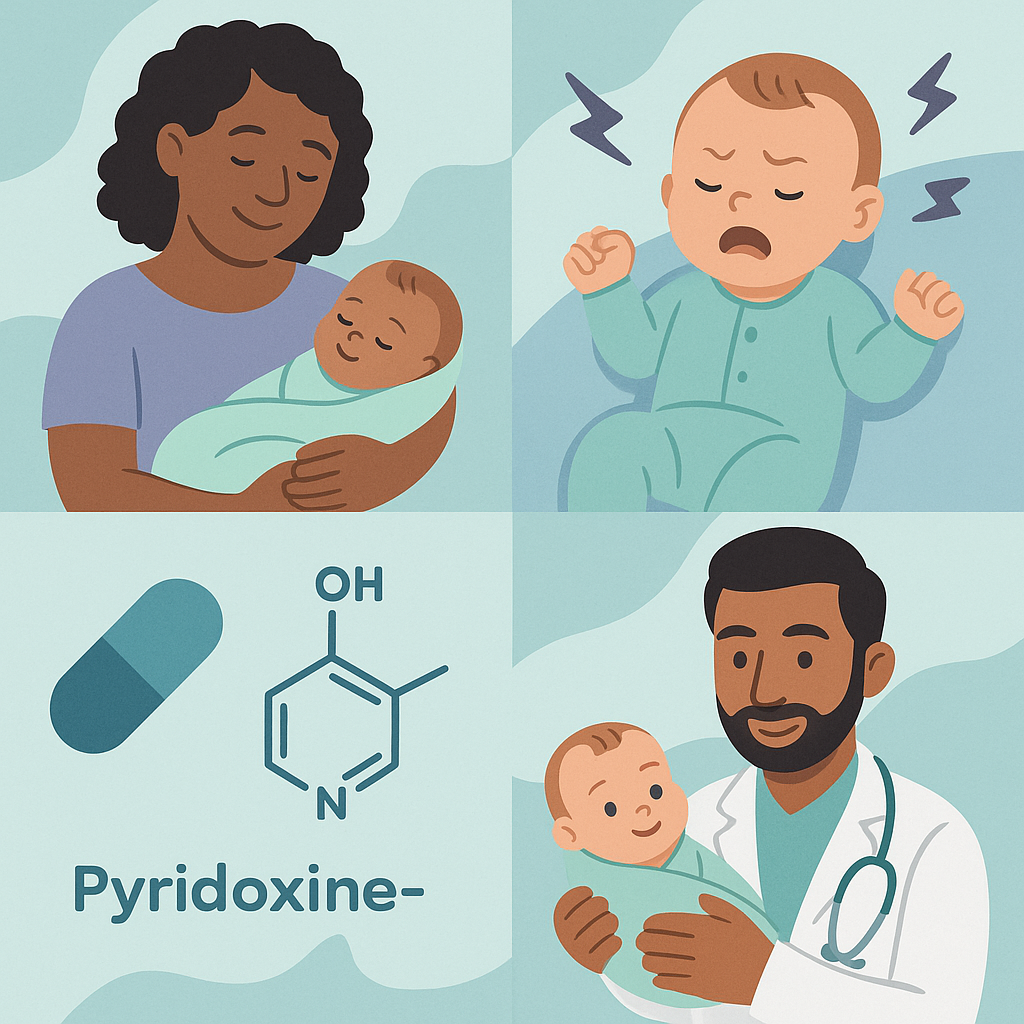Understanding Pyridoxine-Dependent Epilepsy in Newborns
⚠️ Infant dosing/safety: medication and diet decisions for infants require individualized medical guidance.
Source: Molecular genetics and metabolism reports
Summary
Researchers studied a rare condition called Pyridoxine-Dependent Epilepsy (PDE), which is caused by changes in a gene known as ALDH7A1. They focused on a newborn who showed unusual symptoms, including severe acid buildup in the body, muscle breakdown, and high ammonia levels. These symptoms are not typical for most cases of PDE, which usually present with seizures that respond to a vitamin called pyridoxine.
The key findings from this study revealed that the newborn had very high levels of lactic acid and other unusual lab results, which improved after treatment with fluids and medications. The baby also had brain imaging that showed some abnormalities. Importantly, the researchers found two specific changes in the ALDH7A1 gene, one of which was previously known, while the other was considered uncertain. After starting the right treatment, the baby showed significant improvement and was able to go home after 25 days.
This study is important because it highlights how PDE can present with unexpected symptoms, such as high lactic acid levels, which can complicate diagnosis and treatment. Understanding these variations can help doctors recognize and manage the condition better. However, the study is limited by the small number of cases reviewed, making it hard to draw broad conclusions about all patients with this condition.
Free: Seizure First Aid Quick Guide (PDF)
Plus one plain-language weekly digest of new epilepsy research.
Unsubscribe anytime. No medical advice.





